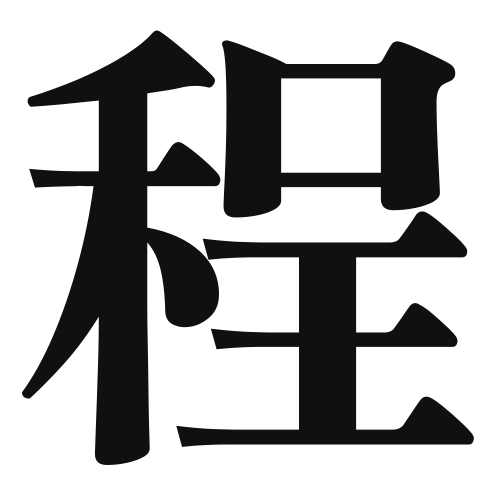1. Overview of Meaning
The kanji “程” (pronounced “tei” or “hodo”) generally means “extent,” “degree,” or “process.” It is often used to indicate a certain level or standard of something.
2. Formation and Radical
Formation of the Kanji: The kanji “程” is a compound character (会意文字) that combines elements to convey its meaning. It consists of the radical “禾” (rice plant) and “程” (to measure), symbolizing the measurement of growth or progress.
Radical: The radical of “程” is “禾,” which relates to plants and agriculture, emphasizing the idea of growth and measurement.
3. Examples of Usage
Common Words and Phrases: Some frequently used words that include “程” are:
- 程度 (ていど, teido) – degree, extent
- 過程 (かてい, katei) – process
Example Sentences in Daily Conversation:
- この問題の解決には時間がかかる程度がある。
(This problem has a certain degree of time required for resolution.) - 彼は学ぶ過程で多くのことを経験した。
(He experienced many things during the learning process.)
4. Synonyms and Antonyms
Similar Kanji: A similar kanji is “度” (ど, do), which also refers to degree or extent but is often used in contexts related to temperature or frequency.
Antonyms: An antonym for “程” could be “無限” (むげん, mugen), meaning “infinity,” which implies no limits or extent.
5. Cultural and Historical Background
Relation to Japanese Culture: The concept of “程” is significant in Japanese culture, where understanding the appropriate degree or extent of actions is often emphasized in social interactions.
Proverbs and Idioms: One common saying is “程々に” (ほどほどに, hodohodo ni), which means “in moderation” or “to a certain extent,” highlighting the importance of balance in life.
